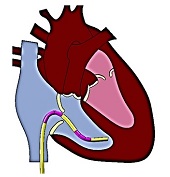
A large variety of commercially available catheters exist, being adopted in different treatments in interventional cardiology. However, a number of complications arises in positioning and steering the catheters due to the complex and dynamic cardiac environment. As a result, both manually and robotically steerable systems have emerged in the past decade. With the various degrees of steerability being available and numerous techniques being developed to achieve steerability, the different steering options along with their advantages and disadvantages remain relatively unexplored. This study aims to provide a structured classification of the underlying steering mechanisms in steerable catheters and to assess their future challenges.
For this purpose, existing, patented, and experimental designs of steerable catheters are classified with respect to their steerability, leading to two categories of steering at a fundamental level: (1) Force Generation in the Tip and (2) Force Transmission to the Tip. The former group consists of force generating steering mechanisms as a result of (1) Electric, (2) Thermal, and (3) Magnetic Actuation. The latter group comprises force transmitting steering mechanisms as the result of (4) Hydraulic Chamber or (5) Mechanic Cable Actuation. Each category is further subdivided into multiple subcategories based on the examples found in literature. Subsequently, the classification is used as a tool for defining future requirements and challenges for steerable cardiac catheters regarding positioning capabilities, cardiac applications and safety, and miniaturization potential.
Our approach succeeds in presenting a structured classification to identify the different steering mechanisms in steerable catheters. The classification proves to be a useful tool in determining future requirements and challenges, being invaluable for future application-driven design. Using the applied classification as a tool for future design will not only provide insight into applied steering technology, it will identify new and unexplored options too, providing room for more dedicated systems and patient-specific treatment.
Keywords: Actuation, minimally invasive surgery, steerable catheter, interventional cardiology, classification.
Research webpages:
http://www.bitegroup.nl/research-projects/multi/multi-steerable-cardiology-instruments/
http://www.imit-stw.nl/index.php/en/projects2/multi-multi-steerable-catheter-for-cardiac-interventions

